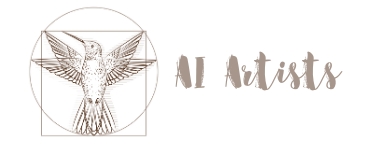AI art has become an exciting way to express creativity, with tools that transform written descriptions into stunning visual works. While the technology is powerful, the true magic lies in crafting the perfect prompt. Knowing how to write prompts for AI Art not only ensures you get results aligned with your vision but also helps unlock the full potential of AI art generators. In this guide, we’ll explore how to write effective prompts and take your AI-generated art to the next level.
Understanding AI Art Prompts
At its core, an AI art prompt is a text-based instruction that guides an AI model to create an image. The better you describe your vision, the more accurate the AI’s interpretation will be. For example, a simple prompt like “a forest” might yield generic results, whereas a detailed prompt like “a mystical forest at sunrise, with golden rays piercing through the fog and illuminating the lush green canopy” adds depth, atmosphere, and specificity to the generated artwork.
AI models interpret prompts by breaking them down into actionable components. These components typically include the subject, action, style, mood, color palette, and any additional elements that enhance the context. Learning to balance these elements effectively is crucial for crafting prompts that inspire creativity while maintaining clarity.
Start with a Clear Subject and Action
Every great AI art prompt begins with a well-defined subject. To guide the AI effectively, describe what you want to see and what action or dynamic element you want to capture. For instance, instead of saying “a cat,” try elaborating: “A regal Persian cat lounging on a velvet cushion beside a window overlooking a snow-covered garden.” This level of specificity gives the AI a clear starting point for creating an intricate scene.

Adding actions or dynamic elements, such as “running,” “dancing,” or “glistening,” brings the subject to life. For example, “A ballerina gracefully leaping in a sunlit studio, her shadow cast on the wooden floor” adds movement and storytelling to the image.
Specify the Style, Medium, and Mood
One of the most powerful ways to refine your prompt is by defining the artistic style or medium you envision. Whether it’s a hyper-realistic rendering, a whimsical cartoon, or a romantic oil painting, these details shape the artistic interpretation. A prompt like “A serene mountain landscape painted in the style of Monet” communicates both the subject and the impressionistic approach you want to achieve.
Equally important is the mood and atmosphere. Using descriptors such as “mystical,” “romantic,” or “surreal” adds emotional depth. You might say, “A surreal scene of a glowing tree floating in the middle of a dark lake, illuminated by ethereal blue light,” to evoke a dreamlike quality in the AI’s output.
Enhance with Perspective and Composition
Perspective and composition significantly influence how the AI frames your scene. If you imagine a specific angle or depth, make sure to include that in your prompt. For example, “A bird’s-eye view of a bustling medieval marketplace” offers a sense of scale, while “a close-up of a rose covered in morning dew” highlights intricate details.
Don’t hesitate to describe how elements in the scene should interact. For instance, “A castle perched on a cliff under a stormy sky, with lightning illuminating the surrounding ocean waves” combines composition, perspective, and mood into a single cohesive instruction.
Advanced Techniques for Writing AI Art Prompts
Incorporate Lighting, Textures, and Time Periods
Advanced prompts often include details about lighting and textures, which can dramatically impact the final result. For example, “Golden hour light casting long shadows over a field of wheat” creates a warm, tranquil effect, while “soft candlelight illuminating an antique wooden desk” evokes a nostalgic atmosphere.
Historical or cultural references can add richness to your art. A prompt like “A Victorian-era ballroom filled with elegantly dressed dancers under a grand chandelier” situates the scene in a specific time and place, allowing the AI to draw from a rich visual context.
Experiment with Layers of Detail
Writing prompts is as much an art as it is a science. Experimentation often yields unexpected and delightful results. Start with a simple base and layer additional details as needed. For instance, begin with “A futuristic cityscape,” then refine it with “neon lights reflecting off rain-soaked streets, flying cars zooming past towering skyscrapers, and a cyberpunk aesthetic.”
Avoiding Common Pitfalls
While it’s tempting to add as much detail as possible, overloading a prompt can confuse the AI. Strive for a balance between clarity and specificity. A concise yet descriptive prompt like “A dreamlike forest with glowing mushrooms and mist swirling under moonlight” is often more effective than a sprawling sentence filled with unnecessary adjectives.
Mastering the art of AI prompt writing unlocks a world of creative possibilities. By carefully crafting your instructions with a clear subject, style, and additional details, you can transform abstract ideas into visually stunning AI-generated art. Whether you’re an artist exploring new mediums or a hobbyist experimenting with AI tools, the power to create extraordinary visuals lies in the words you choose.
So, the next time you sit down to write a prompt, take your time to visualize your scene, articulate your ideas clearly, and let AI bring your imagination to life.
